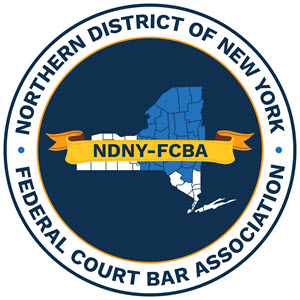By William R. Harris
J.D. Candidate 2021
University of Michigan Law School
On June 20, 2019, the Supreme Court issued its decision in McDonough v. Smith, 139 S. Ct. 2149 (2019), holding that the statute of limitations on a 42 U.S.C. § 1983 fabricated-evidence claim begins to run when the criminal proceeding against the plaintiff terminates in his favor. The district court case, from the Northern District of New York, had held that such claims accrue earlier, when the alleged fabrication results in damages and the ‘‘plaintiff becomes aware of the tainted evidence and its improper use.” McDonough v. Smith, 15-CV-1505, 2016 WL 7496128 (N.D.N.Y. Dec. 30, 2016) (D’Agostino, J.). The Second Circuit affirmed. In rejecting this approach, the Supreme Court sided with the majority of circuits.
The plaintiff, Edward G. McDonough, was an elections official in Rensselaer County. In 2009, he processed fabricated ballot applications, which he claims was not intentional. Youl “Trey” Smith was appointed Special District Attorney for Rensselaer County to investigate the fabricated applications. According to McDonough, Smith presented a grand jury with fabricated DNA evidence that implicated McDonough in the falsified applications. McDonough was indicted by that grand jury on charges of forgery and criminal possession of a forged instrument.
Smith’s first prosecution of McDonough ended in a mistrial. Smith retried the case, and McDonough was acquitted on December 21, 2012. On December 18, 2015, McDonough brought an action against Smith and others in the Northern District of New York, claiming that fabricated evidence had been presented at both trials. The action included § 1983 claims of fabricated evidence and malicious prosecution. The district court dismissed the malicious prosecution claim due to absolute immunity. In addition, the district court held that the fabricated evidence claim was time-barred because McDonough was harmed and reasonably aware of the improper use of the fabricated evidence against him more than three years before he brought the action – outside the statute of limitations period. The Second Circuit reviewed the case de novo and affirmed the district court’s rulings.
In an opinion written by Justice Sotomayor, the Supreme Court overruled the Second Circuit’s decision and held that the statute of limitations began running only when the criminal proceedings against McDonough terminated in his favor. In its decision, the Court applied the rule taken from the most natural common-law analogy, and determined that the tort of malicious prosecution was most analogous to a § 1983 fabricated-evidence claim. Additionally, the Court expressed a concern for practical considerations that led it to err on the side of deferring the accrual of claims that would otherwise permit parallel criminal and civil litigation over the same subject matter.
The Court has previously approached statutes of limitations for § 1983 claims by referring to common-law principles governing analogous torts. “At bottom,” the Court reasoned, a fabricated-evidence claim asserts that the integrity of a criminal prosecution has been compromised. McDonough, 139 S. Ct. at 2156. Given this fact and the similarities with the tort of malicious prosecution, the Court identified the tort of malicious prosecution as the common-law tort most analogous to a § 1983 fabricated-evidence claim. Thus, it reasoned, rules for malicious prosecution claims, which accrue when the criminal proceeding has terminated in the accused’s favor, “guide” the analysis of the statute of limitations for fabricated-evidence claims. Id. at 2156 (quoting Manuel v. City of Joliet, Ill. 137 S. Ct. 911, 920 (2017))
The Court also found that practical concerns underpinning the statute of limitations for malicious prosecution claims also apply to fabricated-evidence claims. The Court believed that allowing parallel civil and criminal litigations would welcome undesirable challenges to judicial finality and consistency. In addition, the Court found, concerns of federalism arise because § 1983 claims are generally heard in federal court, and underlying criminal proceedings will often be in state court as they were in McDonough.
The Court rejected arguments in favor of the Second Circuit’s approach. Given that some criminal prosecutions last longer than three years, the Court feared that having the statute of limitations run before the conclusion of the criminal investigation would create situations “fraught with peril” for the criminal defendant. McDonough, 139 S. Ct. at 2158. In the process of pursuing a civil action against his accuser, a defendant may be “tipping his hand as to his defense strategy, undermining his privilege against self-incrimination, and taking on discovery obligations not required in the criminal context.” Id. To avoid this dilemma, and achieve interests related to “core principles of federalism, comity, consistency, and judicial economy[,]” the Court reasoned that the favorable termination of a criminal proceeding is the better starting point for a fabricated evidence claim’s statute of limitations. Id.
Justice Thomas wrote a dissent joined by Justices Kagan and Gorsuch. They argued that because “the constitutional basis for McDonough’s claim is unclear,” the Court should have dismissed the case. Id. at 2161. The majority assumed “without deciding that the Second Circuit’s articulations of the right at issue and its contours are sound.” Id. This was problematic to the dissenters because it is not clear that the parties agreed with the Second Circuit’s articulation, which grounded the claim in the Due Process Clause. Furthermore, they argued, even if fabricated evidence claims are properly grounded in the Due Process Clause, it would be best for the Court to “determine the claim’s elements before deciding its statute of limitations.” Id.
Finally, the Court declined to consider what constitutes a “favorable termination” to a criminal proceeding for the accused. Id. at 2160 n.10. Being acquitted (as McDonough was) is a clear instance. But discretionary prosecutorial actions, such as the decision to drop criminal charges, may or may not constitute “favorable” terminations for purposes of a fabricated evidence claim. Id. At most, the Court indicated that determining what is a favorable termination may call for “context-specific” and “capacious” analysis. Id.
The decision is available on the Supreme Court’s website.

